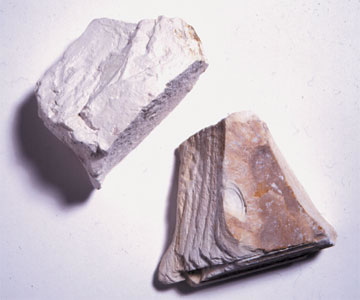Kaolin clotting time on:
[Wikipedia]
[Google]
[Amazon]
Kaolin clotting time (KCT) is a sensitive test to detect
 The test combines a test plasma with
The test combines a test plasma with
lupus anticoagulant
Lupus anticoagulant is an immunoglobulin that binds to phospholipids and proteins associated with the cell membrane. Its name is a partial misnomer, as it is actually a prothrombotic antibody ''in vivo''. Lupus anticoagulant in living systems ca ...
s. There is evidence that suggests it is the most sensitive test for detecting lupus anticoagulants. It can also detect factor VIII
Factor VIII (FVIII) is an essential blood-clotting protein, also known as anti-hemophilic factor (AHF). In humans, factor VIII is encoded by the ''F8'' gene. Defects in this gene result in hemophilia A, a recessive X-linked coagulation disorder ...
inhibitors but is sensitive to unfractionated heparin
Heparin, also known as unfractionated heparin (UFH), is a medication and naturally occurring glycosaminoglycan. Since heparins depend on the activity of antithrombin, they are considered anticoagulants. Specifically it is also used in the treatm ...
as well.
The KCT on whole blood is known as the "Activated Clotting Time" (ACT) and is widely used in various instruments during surgery such as cardiac bypass to monitor heparin.
History
KCT was first described by Dr. Joel Margolis in 1958. Later on it was found to be very sensitive to lupus anticoagulants but was only reliable when test plasmas were mixed with normal plasma in various proportions. It became the preferred method for lupus anticoagulant testing after Dr Wilhelm Lubbe showed it to be a good marker for recurrent fetal loss.Principle
KCT is similar to theactivated partial thromboplastin time
The partial thromboplastin time (PTT), also known as the activated partial thromboplastin time (aPTT or APTT), is a blood test that characterizes coagulation of the blood. A historical name for this measure is the kaolin-cephalin clotting time ( ...
test, except it does not use exogenous phospholipid
Phospholipids, are a class of lipids whose molecule has a hydrophilic "head" containing a phosphate group and two hydrophobic "tails" derived from fatty acids, joined by an alcohol residue (usually a glycerol molecule). Marine phospholipids typ ...
. Thus, a confirmatory test that uses excess phospholipid is needed to validate the presence of lupus anticoagulants. Otherwise diluting the test plasma in normal plasma before testing provides characteristic mixing patterns.Exner,T (1978). "A sensitive test demonstrating lupus anticoagulant and its behavioural patterns". British Journal of Haematology. 40 (1): 143-51.
Kaolin is the surface activator, and the test also requires small amounts of cell fragments and plasma lipids to provide the phospholipid surface required for coagulation. Therefore, the sample quality is important for the validity of the screening test.
Method
 The test combines a test plasma with
The test combines a test plasma with kaolin
Kaolinite ( ) is a clay mineral, with the chemical composition Al2 Si2 O5( OH)4. It is an important industrial mineral. It is a layered silicate mineral, with one tetrahedral sheet of silica () linked through oxygen atoms to one octahedra ...
, and after a brief pre-incubation and the addition of calcium chloride, the time to clot (in seconds) is measured. Mixes of patient plasma with normal plasma are recommended for testing.Ledford-Kraemer, L. et al (2014). "Laboratory testing for the lupus anticoagulant". CLSI; H60 1st edition.
Interpretation
The KCT test/control ratio of greater than or equal to 1.2 indicates that a defect is present. If the test/control ratio is between 1.1 and 1.2, the test is equivocal. A good way of expressing the result using mixes is to calculate the Rosner index.Rosner, R.; Pauzner, R.; Lusky, A. (1987). "Detection and quantitative evaluation of lupus anticoagulant activity". Thrombosis and Haemostasis.57;144-7. If A is the KCT of normal plasma, B is that of the 1:1 mix and C is that of the patient plasma, then the Rosner index is 100x(B-A)/C. Values above 15 indicate a positive result but in most cases labs set their own cutoff values. If the KCT is less than 60 seconds, this suggests that the test plasma is contaminated with platelet fragments; therefore, the test is not valid.See also
* Dilute Russell's viper venom time *Partial thromboplastin time
The partial thromboplastin time (PTT), also known as the activated partial thromboplastin time (aPTT or APTT), is a blood test that characterizes coagulation of the blood. A historical name for this measure is the kaolin-cephalin clotting time ( ...
* Activated clotting time
References
{{reflist Blood tests